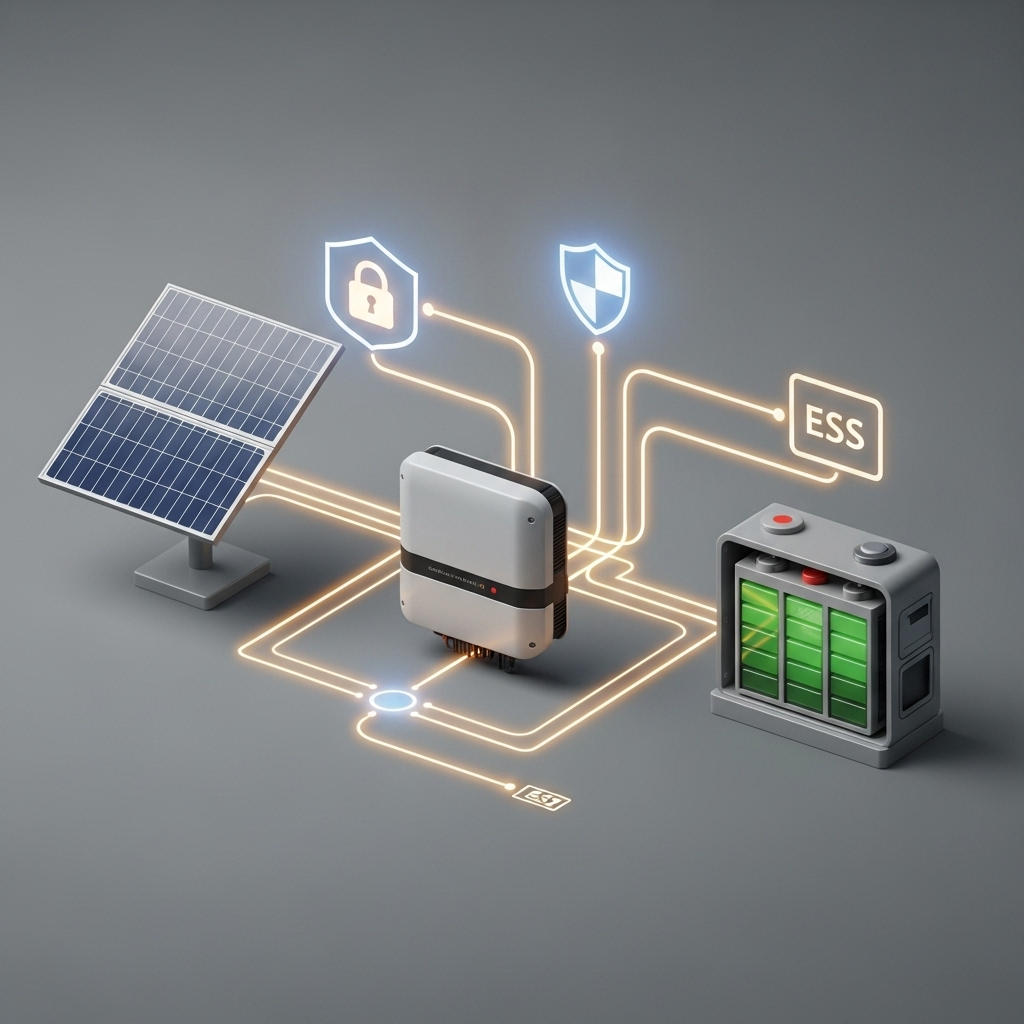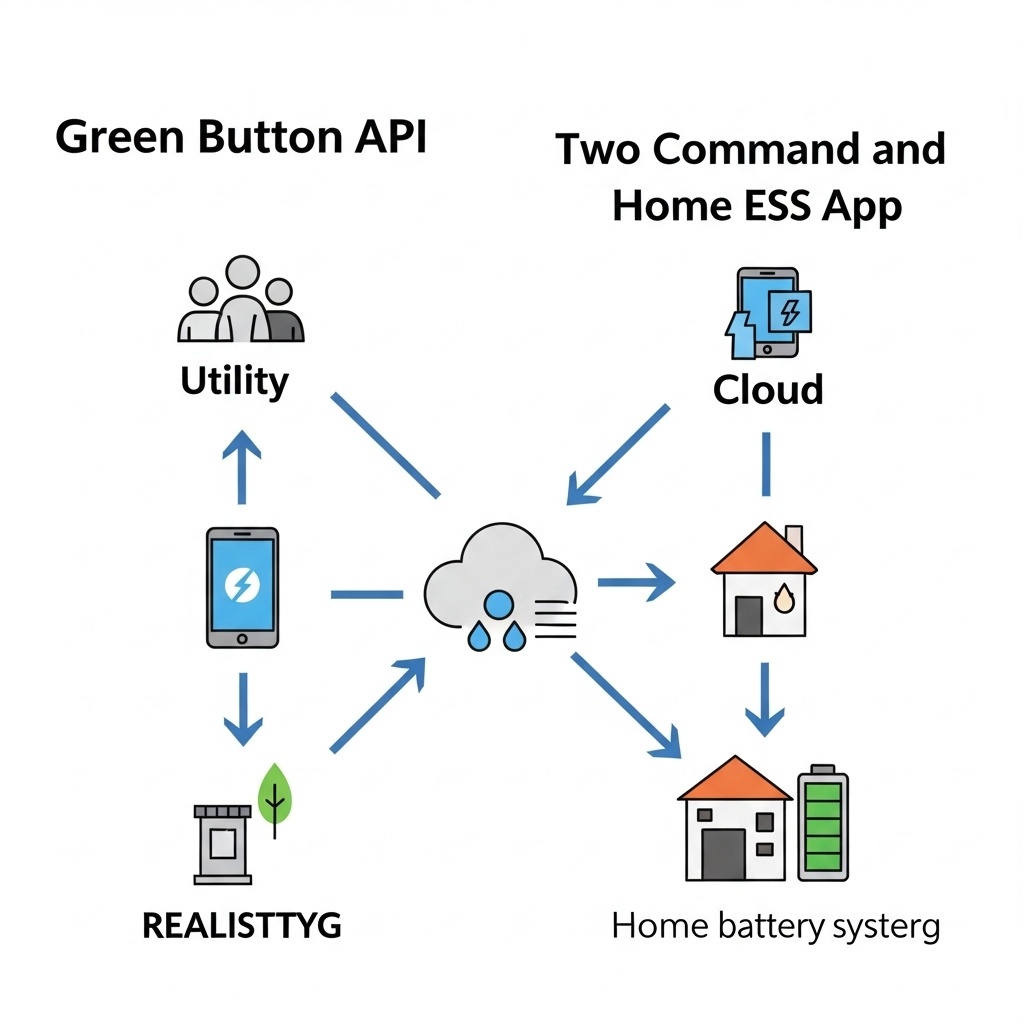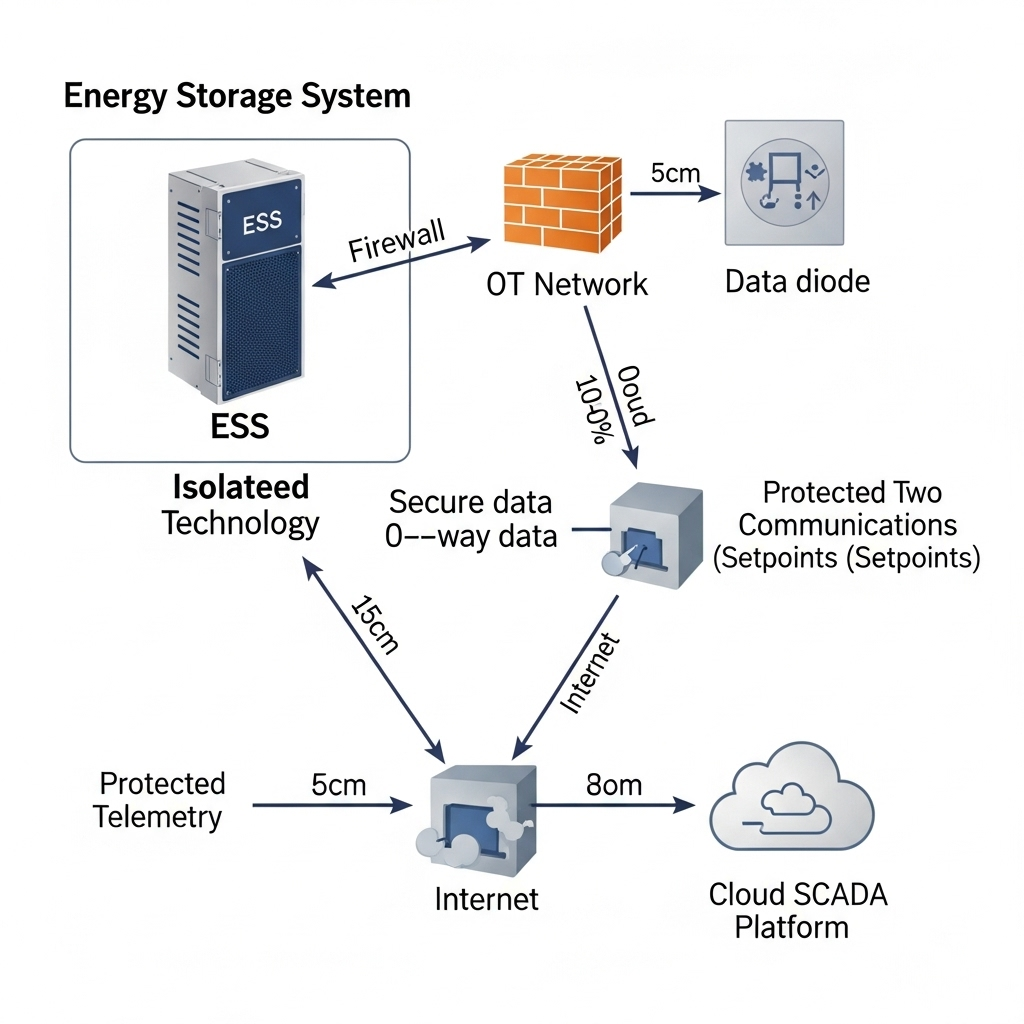As solar power and energy storage systems become more intelligent and interconnected, the communication link between your inverter and Energy Storage System (ESS) is more critical than ever. This digital connection unlocks advanced features and efficiency. It also opens a new front for potential cyber threats. Achieving robust inverter-ESS interoperability is the foundation for a secure and resilient energy future.
Many systems rely on proprietary, closed communication methods. This can lead to vendor lock-in and, more importantly, hidden security vulnerabilities. This text explains how standardized communication and a focus on interoperability can protect your energy assets from digital risks, ensuring your system is both smart and safe.
The Interoperability Challenge in Modern Energy Systems
The connection between an inverter and an ESS is no longer a simple one-way street. It's a dynamic dialogue, managing energy flow, monitoring performance, and responding to grid conditions. When this dialogue is not standardized, it creates significant challenges.
Defining Inverter-ESS Interoperability
Inverter-ESS interoperability is the ability of devices from different manufacturers to communicate and function together seamlessly and securely. Instead of being locked into a single brand's ecosystem, you can choose the best inverter and ESS for your needs, confident that they will operate as a unified system. This relies on shared communication protocols, which act as a common language for all devices.
Why a Lack of Standards Creates Security Risks
Proprietary communication protocols can be a black box. Without public scrutiny, they may contain unpatched flaws or backdoors that could be exploited. A lack of standardization makes it difficult to apply consistent security policies across a mixed-vendor system. According to a report from the International Renewable Energy Agency, Grid Codes for Renewable Powered Systems, the increasing programmability of inverter-based resources (IBRs) means that their controller software is a key factor in system security. If this software cannot be updated securely and universally, it becomes a major vulnerability.
Core Pillars of Secure Interoperable Communication
Building a secure link between your inverter and ESS requires a multi-layered approach. Focusing on standardized, open, and verifiable methods is key to creating a defense that is both strong and adaptable.
Standardized Communication Protocols
Adopting industry-wide standards is the first step toward universal security. Protocols like SunSpec for solar components and IEEE 2030.5 for smart energy management provide a common framework. These standards define not just how data is exchanged but also incorporate security features from the ground up. This ensures that any compliant device can communicate with a baseline level of security, simplifying integration and reducing risk.
Authentication and Authorization
Secure communication starts with verifying identity. Authentication confirms that the device you are talking to is what it claims to be. Authorization then dictates what actions that authenticated device is allowed to perform.
- Authentication: Methods like mutual Transport Layer Security (mTLS) create a trusted connection where both the inverter and the ESS verify each other's digital certificates before exchanging any data. This prevents man-in-the-middle attacks, where an attacker impersonates a legitimate device.
- Authorization: Once authenticated, a device should only have access to the functions it needs. For example, an inverter might be authorized to read battery state of charge but not to change core firmware settings. This principle of least privilege limits the damage an attacker can do if they compromise one part of the system.
Data Encryption In Transit
Any data sent between the inverter and the ESS must be encrypted. This includes performance data, control commands, and status updates. Transport Layer Security (TLS), the same technology that protects online banking, creates a secure, encrypted tunnel for all communication. This makes the data unreadable to anyone who might intercept it, protecting your operational data and preventing malicious commands from being injected into the system.
Implementing a Secure and Interoperable Framework
Theory is one thing; practical implementation is another. A secure framework combines the right technology with smart operational practices.
The Role of Grid-Forming Inverters
Advanced inverters, particularly grid-forming inverters, are becoming essential for grid stability. They can provide services like black-start capability, which allows a section of the grid to restart independently after an outage. As the IRENA report points out, these capabilities depend on real-time communication and control. Secure interoperability ensures that these critical grid-support functions can be executed reliably without being vulnerable to disruption.
Performance Monitoring for Anomaly Detection
Your system's performance data is also a valuable security tool. By establishing a baseline for normal operation, you can spot anomalies that might indicate a cyber incident. A sudden, unexplained drop in efficiency or erratic charging behavior could be a sign of a compromised device. Monitoring these key performance indicators is crucial for both optimization and security. For a deeper look at the metrics to track, the ultimate reference on solar storage performance offers a detailed breakdown of metrics like round-trip efficiency and depth of discharge, which can serve as your first line of defense in anomaly detection.
A Layered Security Approach
There is no single magic bullet for cybersecurity. A robust defense relies on multiple layers.
| Security Layer | Function | Example |
|---|---|---|
| Network Segmentation | Isolates critical components from other devices on your network. | Placing your inverter and ESS on a separate VLAN or firewall-protected subnet. |
| Secure Protocols | Ensures data is authenticated and encrypted in transit. | Using SunSpec over TLS 1.3 for all device communication. |
| Firmware Integrity | Protects against malicious software updates. | Using devices that require cryptographically signed firmware updates. |
| Access Control | Limits user and device permissions to the bare minimum. | Creating separate user accounts with specific, limited privileges. |
Future-Proofing Your System
The energy landscape and the threat landscape are both constantly evolving. A forward-looking approach is necessary to maintain long-term security.
The Push for Cybersecurity Standards
Governments and industry bodies are recognizing the need for stronger regulations. The U.S. Department of Energy's Solar Futures Study emphasizes that the flexibility of inverter-based resources must be matched with strong cybersecurity. As these standards become mandatory, systems built on interoperable and secure foundations will be easier to adapt, while proprietary systems may become obsolete or non-compliant.
The User's Role in Maintaining Security
Manufacturers provide the tools, but users play an active role in maintaining security. This includes:
- Applying firmware updates promptly to patch newly discovered vulnerabilities.
- Using strong, unique passwords for all system interfaces and disabling default accounts.
- Being vigilant against phishing attacks that may try to trick you into revealing credentials.
Disclaimer: This information is for educational purposes only and does not constitute financial or legal advice. Always consult with a qualified professional for specific guidance.
Looking Ahead: A Resilient Energy Future
True energy independence is about more than just generating your own power. It's about having a system that is reliable, efficient, and secure. Inverter-ESS interoperability is not a technicality; it is a strategic imperative. By championing standardized protocols, robust authentication, and layered security, we can build a distributed energy grid that is resilient against both physical and digital threats. This approach ensures that your investment in solar and storage is protected for years to come.
Frequently Asked Questions
What is inverter-ESS interoperability?
It is the ability for solar inverters and energy storage systems (ESS) from different manufacturers to communicate and work together effectively and securely. This is achieved through common, standardized communication protocols.
Why are proprietary communication protocols a security risk?
Proprietary protocols are often not publicly documented or scrutinized, which means they can contain hidden vulnerabilities. They also make it difficult to apply consistent security updates across a system with equipment from multiple vendors, creating potential weak points for attackers.
What is the most important first step to secure my inverter and ESS communication?
The most important step is to ensure your devices use strong authentication and encryption for all communication. This typically involves enabling TLS (Transport Layer Security) and ensuring that only authorized devices can connect and issue commands.
How does a grid-forming inverter relate to cybersecurity?
Grid-forming inverters provide critical services for grid stability, such as managing voltage and frequency or enabling a blackstart after an outage. These functions rely on precise, real-time communication. Secure, interoperable communication ensures these critical commands cannot be intercepted or spoofed by an attacker, which would jeopardize grid stability.





Leave a comment
All comments are moderated before being published.
This site is protected by hCaptcha and the hCaptcha Privacy Policy and Terms of Service apply.